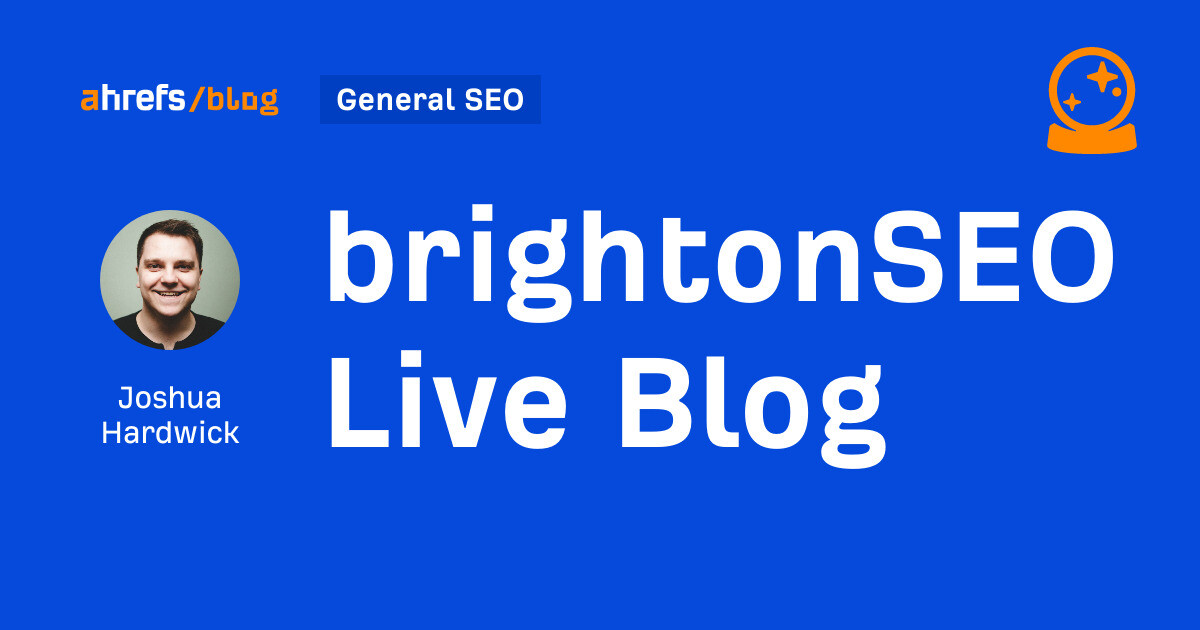SEO
10 Law Firm Marketing Tactics For Business Building In 2024

The legal industry is more competitive than ever, requiring law firms to leverage a blend of advanced technology and refined marketing tactics to stay ahead. A blend of SEO tactics to improve organic visibility and PPC advertising to target high-intent audiences can give you the edge.
Modern marketing strategies require personalized approaches that resonate with clients and potential audiences. A mix of strategies can put your law firm in front of the right people at the right time.
Below are timely recommendations for law firm marketing tactics, each designed to address distinct aspects of a comprehensive and effective marketing strategy.
1. Develop A Comprehensive Marketing Calendar
A well-planned marketing calendar is essential for law firms to strategically organize and schedule their marketing activities throughout the year.
By mapping out campaigns, budgets, and key dates in advance, law firms can avoid ad-hoc marketing efforts and ensure a consistent and sustained approach.
This proactive strategy enables firms to align marketing efforts with business objectives and key dates in the legal calendar, providing a framework for systematic progress and evaluation.
Adapt to today’s dynamic omnichannel environment. Consider blending traditional channels like billboards and TV ads with a mix of organic and paid strategies on popular online platforms like Google and Facebook for optimal results.
Read more: How To Create An Editorial Calendar For Content Marketing In 5 Easy Steps
2. Embrace Digital Marketing
A robust online presence is indispensable for law firms.
This involves leveraging SEO to enhance search engine visibility, engaging in content marketing to provide value and establish authority, and utilizing social media platforms to connect with and expand the client base.
While paid acquisition on Facebook and Google is competitive and expensive, it is necessary if your firm wants to stay top of mind when someone may need your services.
Although competitive, digital marketing can be more cost-effective than traditional forms of advertising like print ads or billboards.
With proper planning and execution, your law firm can reach a large audience without incurring the high costs associated with traditional marketing channels.
A dynamic digital marketing strategy can significantly increase a law firm’s reach and reputation, attracting potential clients and reinforcing relationships with existing ones.
Digital marketing offers robust analytics tools that allow your law firm to track the performance of your campaigns in real time.
This means you can measure the effectiveness of your efforts and make data-driven decisions for optimization.
Today’s digital marketing can be complex for non-trained and experienced professionals.
Consider hiring an experienced digital marketing agency to gain access to experienced marketers.
Be careful not to put your marketing dollars in the hands of inexperienced marketers who have recently graduated from college and are unlikely to have the skills necessary to compete effectively in the fiercely competitive legal vertical.
Read more: 15 Top Digital Marketing Tools & Why We Love Them
3. Personalize Marketing Efforts
Personalization in marketing is about understanding and addressing the specific needs and interests of potential clients.
Tailored messaging that resonates with a client’s unique legal situation enhances engagement and conversion rates.
This involves creating content and marketing materials that speak directly to the concerns and questions of your target audience, making them feel seen and understood, thereby fostering trust and loyalty.
Use audience targeting on paid digital ad platforms like Facebook to boost performance by showing ads to the most relevant audience.
Audience targeting on Facebook refers to the process of selecting and defining specific groups of Facebook users who are most likely to be interested in your content, products, or services.
You can also set up Custom Audiences, which allow you to target people who have already interacted with your business in some way, such as website visitors, app users, or people on your email list.
You can upload your own customer data to create Custom Audiences.
Once you’ve created a Custom Audience, you can use it as a source to create Lookalike Audiences.
Facebook will find users who share similarities with your existing audience, expanding your reach to potential customers who are likely to be interested in your offerings.
Read more: How To Use SEO To Target Your Audience Throughout The Funnel
4. Implement Google Local Service Ads (LSAs)
Google Local Service Ads (LSAs) are a cost-effective way for your law firm to connect with local clients.
The pay-per-lead model ensures that your firm only spends on ads that directly result in client contact.
LSAs appear at the top of Google’s search results, above even traditional paid search ads.
This prime placement can significantly increase your law firm’s visibility and attract potential clients.
Google verifies businesses that use LSAs, which can enhance your law firm’s credibility and trustworthiness.
Potential clients are more likely to choose a verified and trusted legal service provider.
LSAs operate on a pay-per-lead basis rather than pay-per-click.
This means that your law firm only pays when a potential client contacts you directly through the ad, making it a cost-effective advertising option.
LSAs allow your law firm to target ads to specific geographic areas, ensuring that they reach your potential clients who are actively searching for legal services in your local service area.
By targeting individuals searching for legal services in specific areas, LSAs can generate high-quality leads.
LSAs are designed with mobile users in mind, making it easy for potential clients to contact your law firm directly from their mobile devices. This is especially important considering the increasing use of smartphones for local searches.
LSAs facilitate direct communication between potential clients and your law firm through phone calls and messages, streamlining the process of connecting with potential clients.
Even if your law firm does not have a website or a limited online presence, you can still benefit from LSAs, as they provide a direct way for potential clients to contact your firm without visiting a website.
Finally, maintaining an optimized Google Business Profile and gathering positive reviews are key to maximizing the effectiveness of LSAs as an acquisition channel for your law firm.
Read more: Is Getting Your Google Business Profile “Google Guaranteed” Worth It?
5. Implement And Use Google Analytics 4
To gauge the effectiveness of marketing strategies, your law firm must employ analytics tools.
Google Analytics 4 (GA4) is a free software that provides detailed insights into how your law firm’s website performs.
GA4 makes it easy for your law firm to understand how users navigate their website, including which pages are most visited, where users drop off, and the paths users take.
This information can help optimize website content and user experience.
Your law firm can also assess whether your website is effectively engaging and retaining visitors.
By properly tracking the performance of your online campaigns, your firm will be able to understand client behavior and make more effective data-driven decisions.
Regular analysis of these metrics enables your firm to refine its marketing strategies, optimize resource allocation, and enhance the return on investment (ROI) of your digital marketing efforts.
Importantly, Google Analytics tracks specific actions that are valuable to your law firm’s marketing efforts, such as contact form submissions, phone calls, or appointment bookings.
Also, by knowing where your website traffic is coming from – whether from organic search, paid advertising, social media, or referrals – you’ll be empowered to allocate marketing resources effectively and identify successful marketing channels.
Finally, with the increasing use of mobile devices, Google Analytics 4 offers insights into how well your website performs on different devices and screen sizes.
Your law firm can ensure that your website is mobile-friendly and responsive, resulting in more traffic, leads, and marketing success.
Read more: 7 Top Tips To Become A GA4 Pro (Even If You’re A Beginner)
6. Utilize Pay-Per-Click (PPC) Ads
PPC advertising provides your law firm with immediate visibility on search engines like Google, Bing, and other digital platforms.
One of the clearest benefits of PPC advertising is that as soon as a campaign is launched, ads can start appearing in search results, generating traffic to your firm’s website quickly.
PPC allows precise targeting based on keywords, demographics, location, and other factors.
This precision ensures that ads are displayed to a highly relevant audience actively searching for legal services.
With PPC, your law firm has full control over your advertising budget.
You can set daily or monthly spending limits, and only pay when someone clicks on your ads.
This “Pay for Performance” makes PPC campaigns unique to other forms of marketing, increasing the likelihood that it is cost-effective and manageable.
That said, keep in mind the advice given for all forms of digital marketing: It’s almost always best to hire a professional to properly create and effectively manage your PPC campaigns.
If you are a smaller law firm, PPC can level the playing field by allowing your smaller firm to compete with larger, more established competitors.
By bidding strategically on relevant keywords, your smaller firms can gain visibility alongside more established law firms.
PPC campaigns enable your law firm to conduct A/B testing of ad variations, landing pages, and call-to-action buttons.
This testing helps you identify the most effective messaging and design elements to maximize conversions.
Read more: 12 Hidden PPC Features You Should Know About
7. Get Into Legal Directories
Legal directories are a primary digital marketing tactic for law firms.
Getting listings in online legal directories can provide a few benefits for your law firm, and it’s relatively easy for you to do.
Being listed in directories is important because they’re a reputable source of information for potential clients.
However, directories also provide some SEO benefits that will give an added boost to the rest of your digital marketing efforts.
You want your law firm to be one of the top results for those looking for lawyers in your area.
For this to happen, search engines need to know where you’re located, and local listings in directories are one more way of doing this.
A listing in one of these directories will also help with link building, an important part of SEO.
These listings ensure that you’ll get backlinks from websites that you know have good authority.
Read more: How To Attract Backlinks To Your Law Firm Website
8. Incorporate Video Marketing
Video content has become a powerful tool in digital marketing.
Your law firm can use videos to provide a more personal and engaging way to communicate your values, services, and expertise.
Video content tends to be more engaging and memorable than text-based content.
Video can capture your target audience’s attention and convey information in a visually appealing and concise manner.
Videos can be utilized across various platforms, including your law firm’s website, social media, and email marketing campaigns.
Incorporating professional-quality videos, with attention to accessibility through subtitles, can significantly enhance user engagement and SEO performance.
Videos also empower your law firm to communicate complex legal concepts and information in a more accessible and understandable way.
This can help potential clients grasp the nuances of their legal issues and your firm’s services.
To extend your thought leadership beyond the service area of your law firm, you can post your videos on YouTube.
Building out a channel for your law firm on YouTube may increase its reputation, leading to hiring profile cases and opportunities.
Read more: How Digital Video Advertising Will Dominate The Next Decade
9. Market To Existing And Past Clients
Retaining existing clients and re-engaging past clients is often more cost-effective than acquiring new ones.
Happy clients are more inclined to refer friends, family, and colleagues to your law firm.
Word-of-mouth referrals from your existing clients can be a powerful source of new business.
Implementing a Google Review tool, such as BirdEye or Zappy Cards, can significantly enhance word of mouth, as well as serve as social proof of the quality of your legal services.
Marketing to existing and past clients keeps the firm at the forefront of your client’s mind. It can be through regular newsletters, updates on legal developments, and direct mail campaigns, which can encourage repeat business and referrals.
A focus on maintaining strong relationships with current and former clients can yield significant returns in terms of client loyalty and new business opportunities.
Read more: 10 Key Client Questions To Inform Exceptional Quality Content
10. Engage Locally
Local involvement can set your law firm apart in your community.
This can include sponsoring local events, participating in community service, or offering pro bono services.
Such engagement not only builds brand awareness, but also establishes your firm as a committed and integral part of the local community.
This approach can also increase trust and respect within the community, potentially resulting in more client referrals and higher client retention rates.
In such a highly competitive industry, many clients prefer working with local attorneys who deeply understand the local legal landscape and community.
Engaging your law firm locally helps differentiate it from non-local competitors.
Building relationships with local businesses, organizations, and professionals can also lead to a strong referral network.
Other local businesses may refer clients needing legal services to your law firm if given the opportunity to meet and get to know you or one of your law colleagues.
Read more: Using Local Business Partnerships And Collaborations To Build Authority And Visibility
Conclusion
For law firms in 2024, success in marketing requires a balanced blend of technology-driven strategies and personal engagement.
Firms must innovate and adapt to stay competitive in a rapidly changing market.
From embracing digital tools and analytics to fostering deep community connections, these tactics are not just about attracting clients but building enduring relationships and a strong, reputable brand.
By implementing these strategies, law firms can navigate the complexities of the modern legal landscape and achieve sustained growth and success.
More Resources:
Featured Image: FotoSajewicz/Shutterstock
SEO
Google March 2024 Core Update Officially Completed A Week Ago

Google has officially completed its March 2024 Core Update, ending over a month of ranking volatility across the web.
However, Google didn’t confirm the rollout’s conclusion on its data anomaly page until April 26—a whole week after the update was completed on April 19.
Many in the SEO community had been speculating for days about whether the turbulent update had wrapped up.
The delayed transparency exemplifies Google’s communication issues with publishers and the need for clarity during core updates
Google March 2024 Core Update Timeline & Status
First announced on March 5, the core algorithm update is complete as of April 19. It took 45 days to complete.
Unlike more routine core refreshes, Google warned this one was more complex.
Google’s documentation reads:
“As this is a complex update, the rollout may take up to a month. It’s likely there will be more fluctuations in rankings than with a regular core update, as different systems get fully updated and reinforce each other.”
The aftershocks were tangible, with some websites reporting losses of over 60% of their organic search traffic, according to data from industry observers.
The ripple effects also led to the deindexing of hundreds of sites that were allegedly violating Google’s guidelines.
Addressing Manipulation Attempts
In its official guidance, Google highlighted the criteria it looks for when targeting link spam and manipulation attempts:
- Creating “low-value content” purely to garner manipulative links and inflate rankings.
- Links intended to boost sites’ rankings artificially, including manipulative outgoing links.
- The “repurposing” of expired domains with radically different content to game search visibility.
The updated guidelines warn:
“Any links that are intended to manipulate rankings in Google Search results may be considered link spam. This includes any behavior that manipulates links to your site or outgoing links from your site.”
John Mueller, a Search Advocate at Google, responded to the turbulence by advising publishers not to make rash changes while the core update was ongoing.
However, he suggested sites could proactively fix issues like unnatural paid links.
“If you have noticed things that are worth improving on your site, I’d go ahead and get things done. The idea is not to make changes just for search engines, right? Your users will be happy if you can make things better even if search engines haven’t updated their view of your site yet.”
Emphasizing Quality Over Links
The core update made notable changes to how Google ranks websites.
Most significantly, Google reduced the importance of links in determining a website’s ranking.
In contrast to the description of links as “an important factor in determining relevancy,” Google’s updated spam policies stripped away the “important” designation, simply calling links “a factor.”
This change aligns with Google’s Gary Illyes’ statements that links aren’t among the top three most influential ranking signals.
Instead, Google is giving more weight to quality, credibility, and substantive content.
Consequently, long-running campaigns favoring low-quality link acquisition and keyword optimizations have been demoted.
With the update complete, SEOs and publishers are left to audit their strategies and websites to ensure alignment with Google’s new perspective on ranking.
Core Update Feedback
Google has opened a ranking feedback form related to this core update.
You can use this form until May 31 to provide feedback to Google’s Search team about any issues noticed after the core update.
While the feedback provided won’t be used to make changes for specific queries or websites, Google says it may help inform general improvements to its search ranking systems for future updates.
Google also updated its help documentation on “Debugging drops in Google Search traffic” to help people understand ranking changes after a core update.
Featured Image: Rohit-Tripathi/Shutterstock
FAQ
After the update, what steps should websites take to align with Google’s new ranking criteria?
After Google’s March 2024 Core Update, websites should:
- Improve the quality, trustworthiness, and depth of their website content.
- Stop heavily focusing on getting as many links as possible and prioritize relevant, high-quality links instead.
- Fix any shady or spam-like SEO tactics on their sites.
- Carefully review their SEO strategies to ensure they follow Google’s new guidelines.
SEO
Google Declares It The “Gemini Era” As Revenue Grows 15%

Alphabet Inc., Google’s parent company, announced its first quarter 2024 financial results today.
While Google reported double-digit growth in key revenue areas, the focus was on its AI developments, dubbed the “Gemini era” by CEO Sundar Pichai.
The Numbers: 15% Revenue Growth, Operating Margins Expand
Alphabet reported Q1 revenues of $80.5 billion, a 15% increase year-over-year, exceeding Wall Street’s projections.
Net income was $23.7 billion, with diluted earnings per share of $1.89. Operating margins expanded to 32%, up from 25% in the prior year.
Ruth Porat, Alphabet’s President and CFO, stated:
“Our strong financial results reflect revenue strength across the company and ongoing efforts to durably reengineer our cost base.”
Google’s core advertising units, such as Search and YouTube, drove growth. Google advertising revenues hit $61.7 billion for the quarter.
The Cloud division also maintained momentum, with revenues of $9.6 billion, up 28% year-over-year.
Pichai highlighted that YouTube and Cloud are expected to exit 2024 at a combined $100 billion annual revenue run rate.
Generative AI Integration in Search
Google experimented with AI-powered features in Search Labs before recently introducing AI overviews into the main search results page.
Regarding the gradual rollout, Pichai states:
“We are being measured in how we do this, focusing on areas where gen AI can improve the Search experience, while also prioritizing traffic to websites and merchants.”
Pichai reports that Google’s generative AI features have answered over a billion queries already:
“We’ve already served billions of queries with our generative AI features. It’s enabling people to access new information, to ask questions in new ways, and to ask more complex questions.”
Google reports increased Search usage and user satisfaction among those interacting with the new AI overview results.
The company also highlighted its “Circle to Search” feature on Android, which allows users to circle objects on their screen or in videos to get instant AI-powered answers via Google Lens.
Reorganizing For The “Gemini Era”
As part of the AI roadmap, Alphabet is consolidating all teams building AI models under the Google DeepMind umbrella.
Pichai revealed that, through hardware and software improvements, the company has reduced machine costs associated with its generative AI search results by 80% over the past year.
He states:
“Our data centers are some of the most high-performing, secure, reliable and efficient in the world. We’ve developed new AI models and algorithms that are more than one hundred times more efficient than they were 18 months ago.
How Will Google Make Money With AI?
Alphabet sees opportunities to monetize AI through its advertising products, Cloud offerings, and subscription services.
Google is integrating Gemini into ad products like Performance Max. The company’s Cloud division is bringing “the best of Google AI” to enterprise customers worldwide.
Google One, the company’s subscription service, surpassed 100 million paid subscribers in Q1 and introduced a new premium plan featuring advanced generative AI capabilities powered by Gemini models.
Future Outlook
Pichai outlined six key advantages positioning Alphabet to lead the “next wave of AI innovation”:
- Research leadership in AI breakthroughs like the multimodal Gemini model
- Robust AI infrastructure and custom TPU chips
- Integrating generative AI into Search to enhance the user experience
- A global product footprint reaching billions
- Streamlined teams and improved execution velocity
- Multiple revenue streams to monetize AI through advertising and cloud
With upcoming events like Google I/O and Google Marketing Live, the company is expected to share further updates on its AI initiatives and product roadmap.
Featured Image: Sergei Elagin/Shutterstock
SEO
brightonSEO Live Blog

Hello everyone. It’s April again, so I’m back in Brighton for another two days of Being the introvert I am, my idea of fun isn’t hanging around our booth all day explaining we’ve run out of t-shirts (seriously, you need to be fast if you want swag!). So I decided to do something useful and live-blog the event instead.
Follow below for talk takeaways and (very) mildly humorous commentary. sun, sea, and SEO!
-
SEARCHENGINES7 days ago
Daily Search Forum Recap: April 19, 2024
-

 WORDPRESS7 days ago
WORDPRESS7 days ago7 Best WooCommerce Points and Rewards Plugins (Free & Paid)
-

 MARKETING7 days ago
MARKETING7 days agoBattling for Attention in the 2024 Election Year Media Frenzy
-

 WORDPRESS6 days ago
WORDPRESS6 days ago13 Best HubSpot Alternatives for 2024 (Free + Paid)
-

 MARKETING6 days ago
MARKETING6 days agoAdvertising in local markets: A playbook for success
-

 SEO7 days ago
SEO7 days agoGoogle Answers Whether Having Two Sites Affects Rankings
-

 SEARCHENGINES6 days ago
SEARCHENGINES6 days agoGoogle Core Update Flux, AdSense Ad Intent, California Link Tax & More
-

 AFFILIATE MARKETING7 days ago
AFFILIATE MARKETING7 days agoGrab Microsoft Project Professional 2021 for $20 During This Flash Sale




![The Current State of Google’s Search Generative Experience [What It Means for SEO in 2024] person typing on laptop with](https://articles.entireweb.com/wp-content/uploads/2024/04/The-Current-State-of-Googles-Search-Generative-Experience-What-It.webp-400x240.webp)
![The Current State of Google’s Search Generative Experience [What It Means for SEO in 2024] person typing on laptop with](https://articles.entireweb.com/wp-content/uploads/2024/04/The-Current-State-of-Googles-Search-Generative-Experience-What-It.webp-80x80.webp)









